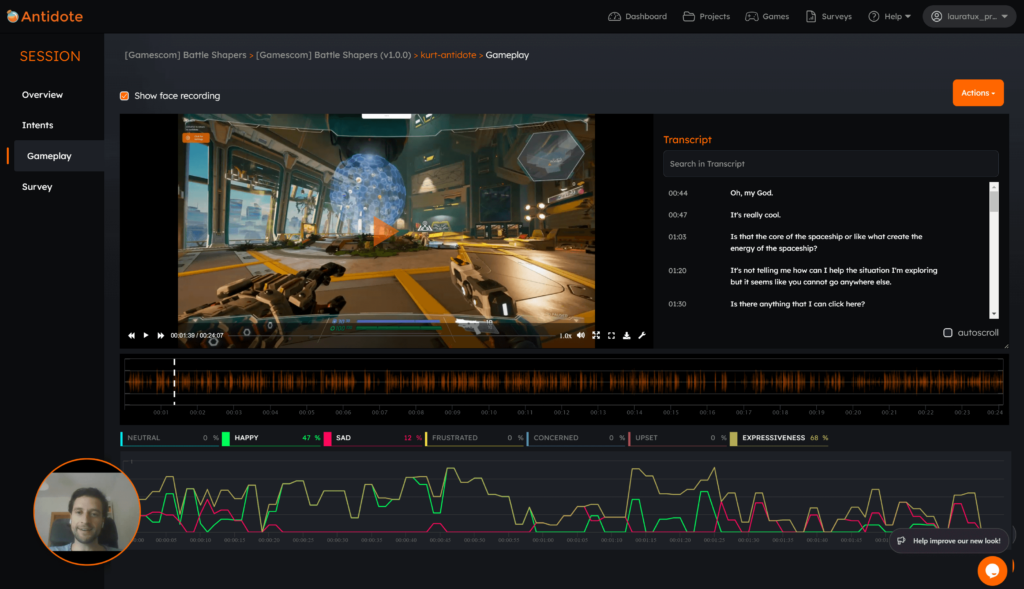Watch the full episode: How to Validate Game Ideas Before Development (Game UX Alchemists Podcast)
In the 11th episode of Game UX Alchemists, the team discusses the importance of concept testing, validating your game ideas at the earliest possible stage.
This time we explore why testing before you build can save time, money and prevent costly delays later in development.
For those short on time, there’s a key summary at the end:
Here is the episode’s summary:
Why Test Before You Build?
Game development is expensive and time-consuming.
If you wait until late in development to discover your core concept doesn’t resonate with players, you’re in trouble. Pivoting at that stage becomes incredibly costly or sometimes impossible.
Developers sometimes assume their ideas will work without validation, only to discover too late that players don’t understand or aren’t interested in what they’ve built. Testing early helps define player expectations and ensures what you plan to build matches what your audience wants.
You can start concept testing as soon as you have an idea to validate (so you don’t need to have finished assets). The team shared examples of tests conducted with nothing but PowerPoint presentations showing story concepts. One test showed players two narratives, one fabricated, one real, to see which felt more engaging before building an entire game around it.
Concept testing isn’t limited to initial ideas either. It applies to new mechanics, character designs, visual styles or expansion content like new stadiums or abilities for existing games.
Who Should You Ask for Feedback?
In some instances, you might need to validate both your concept and your target audience simultaneously.
Start with a broader demographic range than your assumed target. You might discover your game resonates with completely different player profiles than you imagined. This doesn’t mean testing randomly, you still need some boundaries. For example, testing GTA concepts with three-year-olds makes no sense. The strategy is casting a wider net initially, then narrowing based on who responds best to your concept.
This audience validation matters because getting the wrong players means getting wrong feedback, which leads to wrong decisions. If you test a hardcore strategy game with casual mobile players, their feedback won’t help you build a better product for your audience.
That’s why target audience validation is just as critical as concept validation itself.
But what happens when player feedback challenges your creative vision? If you have resources to make exactly what you want without needing commercial success, go for it. But most developers create games to sell them. If that’s your goal, the game needs to appeal to your target players.
Many developers approach testing hoping to confirm their ideas are correct. When feedback reveals issues, they become resistant. But the whole point is figuring out what works and what doesn’t. You need to be open to feedback before you start testing.
And as the team mentions, remember that you’re building the game for other people, not yourself.
The ‘Jetpack Theory’
Not every suggestion deserves implementation. Costa explained it best with his jetpack metaphor. Technically, any game could have a jetpack, but not every game needs one.
Players might request features that sound cool but don’t align with your game’s vision. Reality demands prioritization. For example, when our teams create UX reports, they rate issues by severity, so which problems cause the most friction, which changes would have the biggest impact, which can wait.
The best strategy is splitting validation into at least two stages: something early in conceptualization, something later in implementation. This catches major issues before they become expensive problems.
Real-World Examples
The team shared some real-life examples from their work:
1. PowerPoint Concepts
Focus groups reviewing simple presentations with just sentences and basic visuals to gauge player interest
2. Early Prototypes
Moderated playtests with rough prototypes and unfinished assets that still provided valuable insights about mechanics and expectations
3. DLC Testing
Testing new stadiums, characters and special abilities for existing games before committing to full development
4. Market Research
Helping studios identify target audiences through demographic surveys about preferences and game worlds
What stood out was how different player groups approached the same prototype differently. Some figured out core mechanics in minutes, others struggled with things developers assumed were obvious.
It’s one of the reasons why it’s always imperative to validate assumptions, especially right at the start.
Key Takeaways
Start validating as early as you have an idea worth testing.
The earlier you catch misalignments between your vision and player expectations, the less expensive fixes become. Don’t assume your target audience, validate it alongside your concept.
Be open to feedback. If you’re not willing to make changes based on what you learn, you’re wasting resources on validation that won’t influence your decisions.
If you need help with concept testing, our team at Antidote can lend you a hand. We helped 100+ studios validate their core ideas and target audience.
Anyways, we will see you in the next episode 😊



